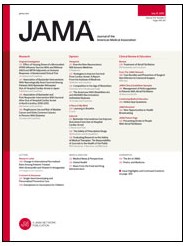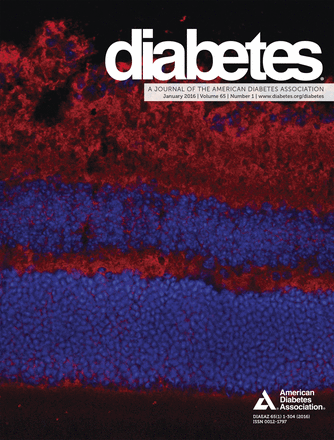WHITEHOUSE STATION, N.J., Nov. 14, 2005 - Merck & Co., Inc. announced today that the U.S. Food and Drug Administration (FDA) has approved INVANZ� (ertapenem), a once-daily injectable antibiotic, for the treatment of moderate to severe complicated foot infection due to indicated pathogens in diabetic patients without osteomyelitis. The approval was based on the results of the SIDESTEP study, the largest prospective, randomized and double-blind clinical trial ever conducted in diabetic patients with moderate to severe complicated foot infection. Foot infections commonly occur in patients with diabetes and are known to be difficult to treat.
"Currently there are limited data available for helping clinicians decide on the most appropriate treatment for foot infections in diabetic patients," said Murray A. Abramson, M.D., M.P.H., medical director, Clinical Development, Infectious Diseases and Oncology at Merck and Co., Inc, Horsham Pennsylvania. "The study supporting this new indication for INVANZ provides physicians with another proven option in the treatment of diabetic foot infections."
INVANZ is indicated for the treatment of moderate to severe complicated skin and skin structure infections including diabetic foot infections without osteomyelitis due to Staphylococcus aureus (methicillin susceptible isolates only), Streptococcus agalactiae, Streptococcus pyogenes, Escherichia coli, Klebsiella pneumoniae, Proteus mirabilis, Bacteroides fragilis, Peptostreptococcus species, Porphyromonas asaccharolytica, or Prevotella bivia. INVANZ has not been studied in diabetic foot infections with concomitant osteomyelitis.
Appropriate specimens for bacteriological examination should be obtained in order to isolate and identify the causative organisms and to determine their susceptibility to ertapenem. Therapy with INVANZ may be initiated empirically before results of these tests are known; once results become available, antimicrobial therapy should be adjusted accordingly.
To reduce the development of drug-resistant bacteria and maintain the effectiveness of INVANZ and other antibacterial drugs, INVANZ should be used only to treat or prevent infections that are proven or strongly suspected to be caused by susceptible bacteria. When culture and susceptibility information are available, they should be considered in selecting or modifying antibacterial therapy. In the absence of such data, local epidemiology and susceptibility patterns may contribute to the empiric selection of therapy.
Continue Reading Below ↓↓↓
INVANZ is contraindicated in patients with known hypersensitivity to any component of this product or to other drugs in the same class or in patients who have demonstrated anaphylactic reactions to beta-lactams. Due to the use of lidocaine HCl as a diluent, INVANZ administered intramuscularly is contraindicated in patients with known hypersensitivity to local anesthetics of the amide type. Serious and occasionally fatal hypersensitivity (anaphylactic) reactions have been reported in patients receiving therapy with beta-lactams.
New indication based on the SIDESTEP study, the largest trial conducted to date in diabetic patients with moderate to severe complicated foot infections without osteomyelitis
The SIDESTEP study, a randomized, double-blind, multi-center trial conducted in adult patients, was designed to determine if INVANZ was at least as clinically effective as piperacillin/tazobactam in the treatment of foot infection in patients with diabetes. Patients with osteomyelitis (bone infection usually caused by bacteria) were not studied in this patient population.
In the SIDESTEP study, 586 patients were randomized into two treatment groups to receive intravenously either INVANZ 1 g once daily (n=295) or piperacillin/tazobactam 3.375 g every six hours (n=291) for a minimum of five days with the option to switch to oral amoxicillin/clavulanate for a total of five to 28 days of treatment (parenteral and oral). Patients were evaluated by their clinical response between treatment groups at the 10-day post therapy follow up visit. All patients were eligible to receive appropriate adjunctive treatment methods, such as debridement, as is typically required in the treatment of diabetic foot infections, and most patients received these treatments. Investigators had the option to add open-label vancomycin if enterococci or methicillin-resistant Staphylococcus aureus (MRSA) were among the pathogens isolated or if patients had a history of MRSA infection and additional therapy was indicated in the opinion of the investigator. Of those patients that were described as evaluable (INVANZ n=204; and piperacillin/tazobactam n=202), 75.0 percent of the patients taking INVANZ had a favorable clinical response compared to 70.8 percent of the patients taking piperacillin/tazobactam [CI=95%]. Rates of favorable microbiological responses and adverse events were also similar between the two treatment groups. In this study, the adverse experiences for INVANZ were similar to those found in other clinical trials for INVANZ.
During clinical trials, the most common side effects in adults related to treatment with INVANZ were diarrhea (5.5%), infused vein complication (3.7%), nausea (3.1%), headache (2.2%), vaginitis in females (2.1%), phlebitis/thrombophlebitis (1.3%), and vomiting (1.1%).
Pseudomembranous colitis has been reported with nearly all antibacterial agents, including INVANZ, and may range in severity from mild to life threatening.
About INVANZ
INVANZ, a carbapenem related to the class of antibiotics known as beta-lactams, is generally given to adults as a 1-gram dose, once a day, by intravenous infusion or intramuscular injection. Dosage adjustment of INVANZ is required in diabetic patients with reduced renal function (see prescribing information). INVANZ is also indicated for the treatment of adults and pediatric patients over three months of age for the following moderate to severe infections caused by susceptible isolates of the designated pathogens:
- Complicated intra-abdominal infections: Due to Escherichia coli, Clostridium clostridioforme, Eubacterium lentum, Peptostreptococcus species, Bacteroides fragilis, Bacteroides distasonis, Bacteroides ovatus, Bacteroides thetaiotaomicron, or Bacteroides uniformis.
- Complicated skin and skin structure infections including diabetic foot infections without osteomyelitis: Due to Staphylococcus aureus (methicillin susceptible isolates only), Streptococcus agalactiae, Streptococcus pyogenes, Escherichia coli, Klebsiella pneumoniae, Proteus mirabilis, Bacteroides fragilis, Peptostreptococcus species, Porphyromonas asaccharolytica, or Prevotella bivia.
- Community-acquired pneumonia: Due to Streptococcus pneumoniae (penicillin susceptible isolates only) including cases with concurrent bacteremia, Haemophilus influenzae (beta-lactamase negative isolates only), or Moraxella catarrhalis.
- Complicated urinary tract infections, including pyelonephritis (kidney infections): Due to Escherichia coli, including cases with concurrent bacteremia, or Klebsiella pneumoniae.
- And acute pelvic infections, including postpartum endomyometritis, septic abortion and post-surgical gynecologic infections: Due to Streptococcus agalactiae, Escherichia coli, Bacteroides fragilis, Porphyromonas asaccharolytica, Peptostreptococcus species, or Prevotella bivia.
Seizures and other central nervous system (CNS) adverse experiences have been reported during treatment with INVANZ. During clinical investigations in adult patients treated with INVANZ (1 g once a day), seizures, irrespective of drug relationship, occurred in 0.5% of patients during study therapy plus 14-day follow-up period. These experiences have occurred most commonly in patients with CNS disorders (e.g., brain lesions or history of seizures) and/or compromised renal function. Close adherence to the recommended dosage regimen is urged, especially in patients with known factors that predispose to convulsive activity.
Source: Merck











